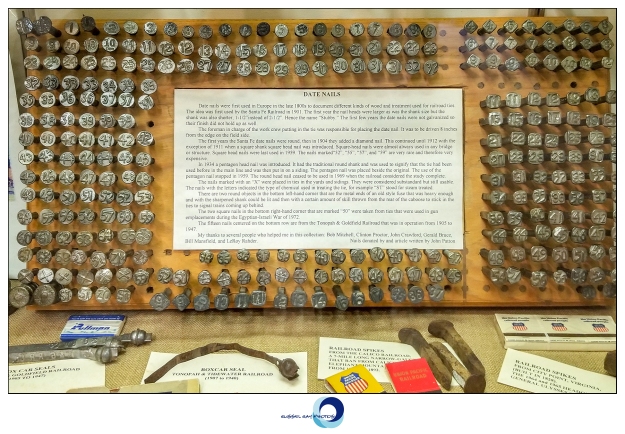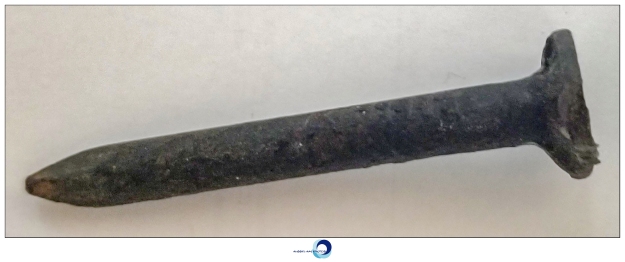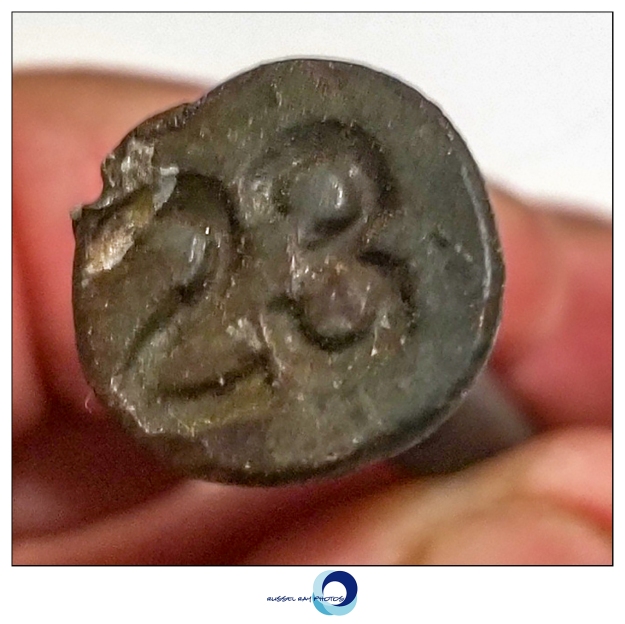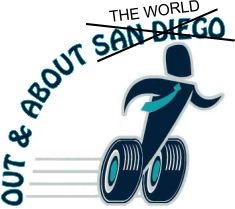
Seen at the Motel 66 where I stayed in Barstow, California, in July 2018.
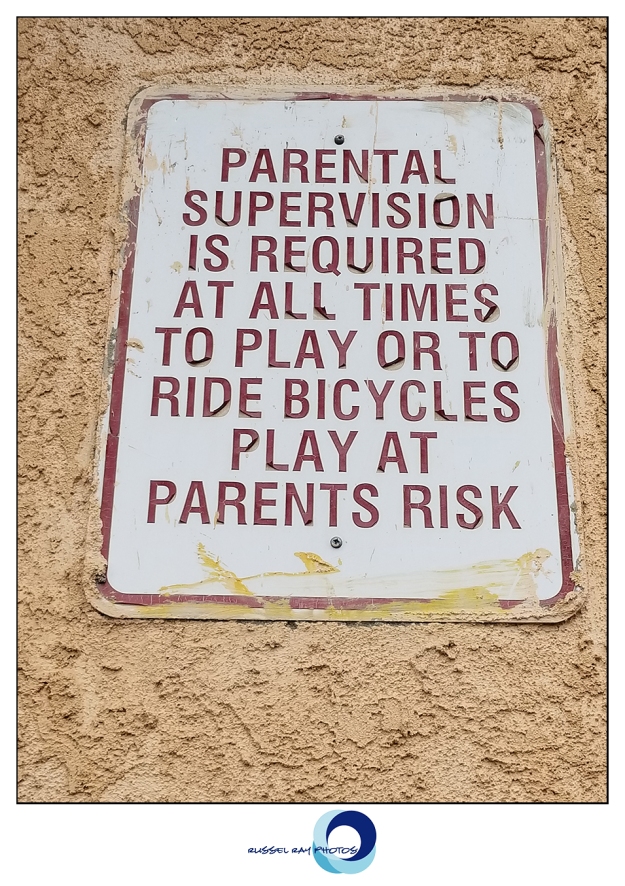



Seen at the Motel 66 where I stayed in Barstow, California, in July 2018.



I got my first bicycle when I was 8 years old (1963) and living in Brigham City, Utah. Granted, I stole it, but….
On the first day I rode my beautiful new bike to school, I parked it in the bike rack at the front of the school. This was back in the days when no one stole things (!), so bikes were not locked.
When I visited Lake View Elementary School on July 25, 2018, the entrance to the school had been moved to a different street. The school principal, who was on site when I was there, told me that re-positioning had occurred in 1981.
I went to the street where the entrance once had been and found a bike rack overgrown with weeds. Wow. I wonder. Could it be that old?



I was fascinated yesterday when the InSight successfully landed on Mars. Facebook memes immediately began cropping up. This is my favorite:

When I joined the Boy Scouts in 1966 after my wise old grandmother had adopted me, I became fascinated by the stars, the clouds, the sky. Space  exploration. The Boy Scouts’ newest merit badge was the Space Exploration merit badge, created in 1965.
exploration. The Boy Scouts’ newest merit badge was the Space Exploration merit badge, created in 1965.
I was on it.
To help me along, Gene Roddenberry created “Star Trek, debuting on television on Thursday, September 8, 1966. On Thursday nights, my wise old grandmother forced me to study or practice my violin.
School nights.
Blah.
 Friday afternoon, though, were daytime repeats of the previous week’s shows, and TV Guide indicated that “Star Trek” would be televised at 3:30.
Friday afternoon, though, were daytime repeats of the previous week’s shows, and TV Guide indicated that “Star Trek” would be televised at 3:30.
I was on it.
School let out at 3:00.
I was home by 3:15,
grabbed a loaf of bread,
a butter knife,
a jar of peanut butter,
a jar of jam,
and sat myself in front of the television from 3:30 to 4:30
to watch “Star Trek.”
I was mesmerized.
The rest, as they say, is history.
I have been a “Star Trek” fan my whole life.
A Trekkie.
A Trekker.
Mesmerized by space exploration television shows and movies. Books. Museums. Exhibits. Just cannot get enough of them.
 When Apollo 11 landed on the moon, a landing to be televised live, I was the saddest kid in the world because the landing would be at 12:17 p.m. on Sunday. I would be in church with my wise old grandmother. I’m not sure what I did to convince her that the moon landing was more important than church on that day, but we did not go to church. I watched the moon landing, and collected Corpus Christi, Austin, San Antonio, and Houston newspapers the next day with their bold headlines and pictures. Sadly, the newspapers got left behind in April 1993 when I escaped Texas and settled in San Diego.
When Apollo 11 landed on the moon, a landing to be televised live, I was the saddest kid in the world because the landing would be at 12:17 p.m. on Sunday. I would be in church with my wise old grandmother. I’m not sure what I did to convince her that the moon landing was more important than church on that day, but we did not go to church. I watched the moon landing, and collected Corpus Christi, Austin, San Antonio, and Houston newspapers the next day with their bold headlines and pictures. Sadly, the newspapers got left behind in April 1993 when I escaped Texas and settled in San Diego.
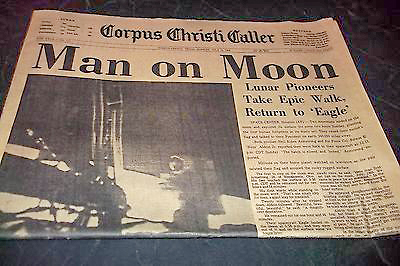
When I was in Barstow, California, on July 30 & 31, 2018, the historic Harvey House railroad depot, renovated and re-purposed, had a Goldstone Deep Space Network Visitor Center and a permanent exhibit about the Deep Space Network and the Goldstone Antennas.
I was on it.
Trains at the historic Barstow rail yard took a back seat for an hour.


NASA’s Deep Space Network is a worldwide network of spacecraft communication facilities specificially for United States spacecraft. Russia, China, India, Japan, and the European Space Agency have similar networks. NASA’s is located in Barstow, California; Madrid, Spain; and Canberra, Australia.




Each facility is located in bowl-shaped terrain surrounded by mountains to help shield against radio frequency interference. The facilities provide nearly 120-degree separation, which allows for constant observation of spacecraft as the Earth rotates, thereby making DSN the largest and most sensitive scientific telecommunications system in the world. The Deep Space Operations Center is at the Jet Propulsion Laboratory in Pasadena, California.

Deep Space is defined as more than two million kilometers from the Earth’s surface, so missions to the Moon do not qualify to use the network. Missions to Mars, however, do.
The antennas are located on government property northeast of Barstow, near Fort Irwin. According to staff at the Visitor Center, they are not visible from any roads since they are in a bowl surrounded by mountains.

And now, we return you to trains and the historic Barstow rail yard.

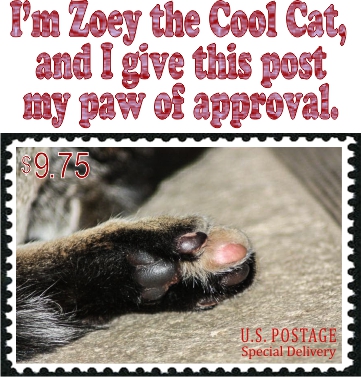
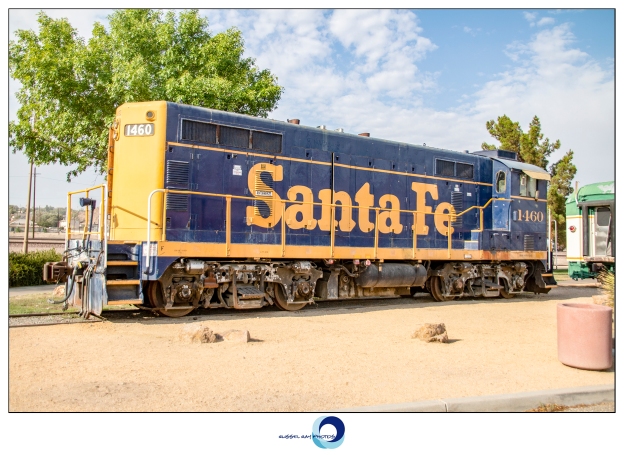
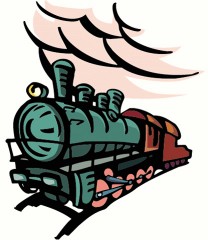
My father and his three siblings, as well as their father, all worked for the Missouri Pacific Railroad at some point in their lives. My dad and granddad made railroad work a career.
Although I have been interested in railroads since I was six, I don’t know much about the actual working equipment—steam locomotives and diesel engines, maintenance of way equipement, cabooses, etc., and their history. However, whenever I see static displays at museums, depots, and rail yards, I presume it is more than just your common equipment, so I take pictures.
Today, I posted this picture on a Santa Fe Railroad group on Facebook:

Knowledgeable people commenting on Facebook did not know what it was. Their lack of knowledge piqued my interest very quickly. Eventually, courtesy of Google, I discovered that it was built as a one-of-a-kind engine in 1970. It currently is preserved as a static display at the historic Harvey House depot in Barstow, California.
Technically, Santa Fe 1460 is a rebuild, but a very unusual one. Originally built in July 1943 at the Baldwin Locomotive Works in Eddystone, Pennsylvania, Santa Fe Railway selected it a test subject to determine if remanufacturing its aging locomotives would be a viable, and less expensive, option over buying new locomotives. Conversion proved too costly, resulting in Santa Fe 1460 being the only locomotive that was modified.
I found conflicting information about the end of 1460’s working years. One source said that it was retired in March 2009 and stored in working condition in Topeka, Kansas. In May 2009, it was donated to the Western America Railroad Museum in Barstow, California, which is where I found it on July 31, 2018.
However, another source, a railfan blogger, said that 1460 was retired in 2012.
Yet a third source, which has a few billion pictures of railroad locomotives, as well as the date and location where the picture was taken, shows Santa Fe 1460 in Cleburne, Texas, on December 16, 1997. The shops in Cleburne are where the remanufacturing took place. On July 6, 1990, it was in Kansas City, Kansas. The last picture of it in the Kansas City area was taken on September 1, 1999. The next picture, dated July 21, 2009, shows it at the Western America Railroad Museum in Barstow.
I’m going to discount the blogger since his information has no references or other sources.


When I went to Brigham City, Utah, in late July 2018, I wanted to find all the homes and stomping grounds from my youth, ages 6-10.
The last home I lived in before the State of Utah took me away from my mom and stepdad (I was one of the State’s greatest juvenile delinquents) was at 301 Englewood Drive. Across the street was a park that I often played in to get away from parental abuse at home. Hmmm. I wonder if the parental abuse was a cause of my juvenile delinquency…………
The park in the early 1960s was covered with poison ivy, which is where I learned that I wasn’t affected by poison ivy. In July 2018 it had grass, trees, playground, basketball courts, baseball fields, picnic areas, and no poison ivy.




I must admit that I was a little saddened and depressed while roaming around Brigham City finding things and reminiscing. I think most of it resulted from not knowing my birth dad (he committed suicide when I was 6) and having no relationship with my birth mother after my wise old (paternal) grandmother adopted me in December 1965. I guess I come from a dysfunctional family….


I spent two days in Barstow, California, in late July 2018. The population was 22,639 in the 2010 census, and the city covered 33 square miles. I’m pretty sure I drove all 33 square miles in the two days I was there.
Barstow is a major transportation hub. Five major highways converge in the city, including Interstate 15 and Interstate 40. Two major railroad systems, the Union Pacific and BNSF, have major classification yards in and around Barstow. The city is the midway point for car traffic between Los Angeles and Las Vegas.
Before the Interstate highway system was built, Barstow was a major city on Route 66, “America’s Road” stretching from Santa Monica, west of Los Angeles, to Chicago. The Interstate highway system, particularly Interstate 40, replaced Route 66, bypassing many cities and their downtowns that originally serviced Route 66 traffic. You could get your kicks on Route 66.
There are many once-vibrant towns and cities on Route 66 that are now ghost towns. They didn’t survive construction of the Interstate highways. Even some major cities, such as Barstow, were affected significantly by the Interstates. Throughout Barstow, on every street, I found abandoned buildings—hotels, restaurants, businesses, houses. Sure, those exist in every city, but not to the extent that I found them in Barstow. Unfortunately, I believe this type of abandonment is ramping up again because of the Internet sales through the likes of Amazon, killing many small businesses. Note that Interstate and Internet are very similar words, and I believe their effects are similar, as well.
Following is a slide show of just some of the abandonment I found in Barstow. I found similar conditions in many other cities on my journey that had been circumvented by Interstate highways.

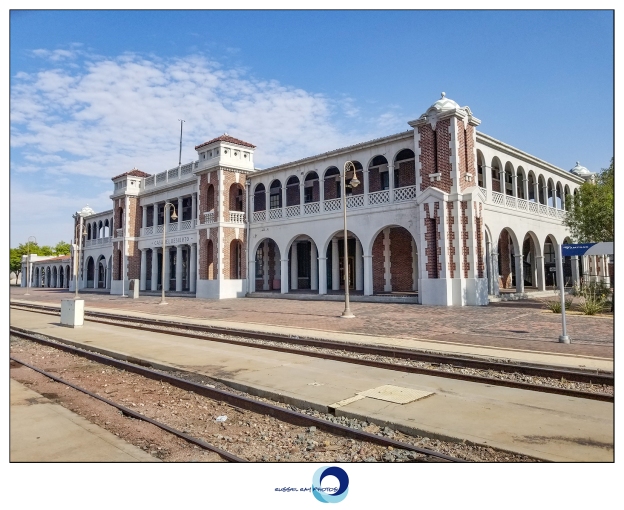

When I went on my journey in late July 2018, I originally had no idea where I was going. I just wanted to get out of California. When I got to Arizona, I slowed down and decided to visit places that I had not been in 50 years, and in a couple of cases, where I had never been. I combined my love of history, nature, and railroads.
That put Barstow, California, high on my list, with its railroad and car history and its position in the Mojave Desert. When I got there, I got a hotel room just a couple of blocks from the Barstow railroad yard, unloaded things, and then walked down to the rail yard to watch some trains.
When I got there, I saw the most beautiful train station.

Since I had arrived late in the day, the station was closed. I walked around the station until sunset and discovered a historical marker outside. This station was a Harvey House. Wow. I didn’t know any still existed.

The plaque reads:
Harvey Houses were legendary in the history of western rail travel. Operated by Fred Harvey in conjunction with the Santa Fe Railway. The network of restaurant-hotels set a new standard in quality meal service. Barstow’s Spanish-Moorish “Casa del Desierto,” opened in 1911 and closed in 1971. It was registered as one of the last and finest remaining examples of the West’s famous Harvey Houses.
The first paragraph in the Wikipedia entry tells more:
The Fred Harvey Company was the owner of the Harvey House chain of restaurants, hotels, and other hospitality industry businesses alongside railroads in the western United States. It was founded in 1876 by Fred Harvey to cater to the growing number of train passengers. When Harvey died in 1901, his family inherited 45 restaurants and 20 dining cars in 12 states. By 1968, when it was sold to Amfac, Inc., the Fred Harvey Company turned into the sixth largest food retailer in the United States. It left behind a lasting legacy of good food, dedication to customers, decent treatment of employees, and preservation of local traditions.
There was history hanging on the walls inside.



Fred Harvey emigrated to the United States from England when he was 17 years old.
The first two Harvey Houses were simply eating houses in Wallace, Kansas, and Hugo, Colorado, serving customers of the Kansas Pacific Railway, opened while Fred Harvey was a freight agent for the Chicago, Burlington & Quincy Railroad. Although the two eating houses were closed within a year, Harvey was convinced of the potential for providing high quality food and service at railroad eating houses.
Harvey approached the Burlington Railroad, which declined his offer to establish a system-wide eating house operation. The Santa Fe Railway, however, contracted with him for several eating houses on an experimental basis. The first eating house on the Santa Fe Railway was established in 1876 in Topeka, Kansas, under terms of an oral agreement. Both railroad officials and passengers were impressed with Harvey’s standards for high quality food and service. Santa Fe’s subsequent contracts with Harvey provided unlimited funds to set up eating houses along most of Santa Fe’s routes. Some of the eating houses at more prominent locations evolved into hotels. By the late 1880s, Harvey dining facilities were located at least every 100 miles along the railroad.
Harvey is credited with creating the first restaurant chain in the United States. (Now we know who to blame!) Harvey and his company became leaders in promoting tourism in the American Southwest in the late 19th century. The “wild wild west” was tamed, at least along the railroad tracks, by Harvey, his company, and its employees, the waitresses who came to be known as Harvey Girls.
Before dining cars, rail passengers patronized roadhouses located near water stops for steam locomotives. Food fare often consisted of rancid meat, cold beans, and week-old coffee, discouraging many from making the journey westward.
Meals were served in large portions, providing a good value for the traveling public. Pies were cut into fourths instead of the industry standard sixths. Eating houses could feed an entire train in just thirty minutes, and meals meals were served on fine China and Irish linens.
Harvey employed only white females on its serving staff, advertising in newspapers throughout the East Coast and Midwest for “white, young women, 18-30 years of age, of good character, attractive and intelligent”. Girls were paid $18.50 a month plus room and board, generous at the time. Women, eventually becoming known as Harvey Girls, were subjected to a 10:00 p.m. curfew and wore starched black and white skirts hanging no more than eight inches off the floor, with “Elsie” collars, opaque black stockings, and black shoes completing the uniform. Hair was restrained in a net and tied with a regulation white ribbon. Makeup was prohibited, as was chewing gum while on duty.
Harvey Girls entered into a one-year employment contract, forgetting half their base pay should they fail to complete the year, which happened most often due to marriage.
The opportunity to leave their homes, enjoy travel, have new experiences, and work outside the home was liberating for thousands of young women.
One of the wall hangings was about the 1946 movie, “Harvey House,” starring Judy Garland, Angela Lansbury, and Ray Bolger. Movie buffs should recognize those names.

When Fred Harvey died in 1901, his company operated 47 restaurants, 15 hotels, and 30 dining cars. The Fred Harvey Company continued into the 1960s under direction of Harvey’s son and grandson. In 1968, the company was purchased by Amfac Parks & Resorts, renamed Xanterra Parks & Resorts in 2002. Xanterra still operates three Harvey Houses: El Tovar Hotel (built 1905) and Bright Angel Lodge (built 1908) on the South Rim of the Grand Canyon, and the Fray Marcos Hotel (built 1908) in Williams, Arizona, which serves as the train depot and hotel for the Grand Canyon Railway.
I was hoping to ride the Grand Canyon Railway from Williams to the Grand Canyon, a distance of about 60 miles, but the train leaves early in the morning, and since I still had time to drive to the Grand Canyon, that’s what I did. Sadly, I did not know anything about Williams so I did not get pictures of the depot and hotel.
I got a picture of El Tovar Hotel at the South Rim. It’s hard to miss the hotel, although I did not know what it was at the time, either.

Barstow originally served the Atchison, Topeka & Santa Fe Railway. Today, the historic yard serves BNSF, Union Pacific, and Amtrak.Only two tracks remain for passenger trains, both used by Amtrak’s Southwest Chief.

While I was hanging around, an Amtrak train pulled. Totally unexpected. Hundreds of people got off the train, stretched, walked around, drank coffee, and smoked cigarettes. After about five minutes, everyone got back on the train and it took off. Strangest. stop. ever.
I talked to a couple of Amtrak employees on the train while people were getting back on board, and it turns out that the train, every seat occupied, was stuck in the high desert for twelve hours when a thunderstorm washed away some tracks. Passengers obviously were a little stressed and tired; since the train already was twelve hours late, letting everyone get off and relax for five minutes was a no-brainer. Here’s a video of the train arriving:
The Barstow Harvey House was closed as a train station in 1971, and closed permanently in 1973. It was added to the National Register of Historic Places in 1975 and named a California Historic Landmark in 1976. The City of Barstow bought it in 1990 after it had sat vacant and neglected for 17 years. It was heavily damaged in the 1992 7.3 magnitude Landers Earthquake. Restoration required more than $8 million in repairs. Currently, the building houses the Barstow Area Chamber of Commerce & Visitor Center, the Western America Railroad Museum, the Route 66 “Mother Road” Museum, and rotating and traveling exhibits.
There is a beautiful bridge over the rail yard which allows for the most beautiful of sunset pictures.





From my research, I found that there were 84 Harvey Houses. I could not find a definitive number for those which remain, but apparently it is less than ten. Casa del Desierto, the House of the Desert, is considered the finest remaining example of a Harvey House.
More pictures:















Long-time readers know that I love photography, and I love the digital photograph editing programs, especially Photoshop.
I also enjoy taking my photographs into Photoshop and messing them up so that they no longer look like photographs.
Here’s a selection of messed up cactus and succulent photographs from yesterday:
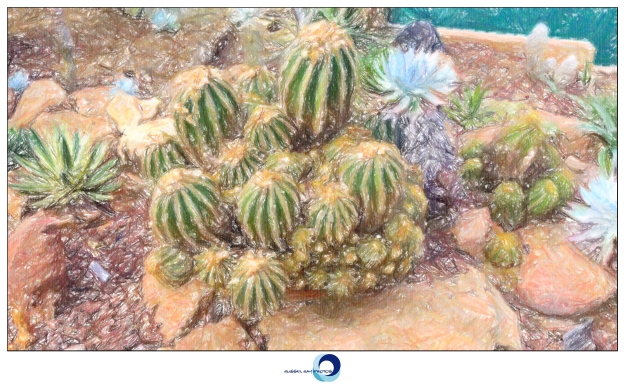
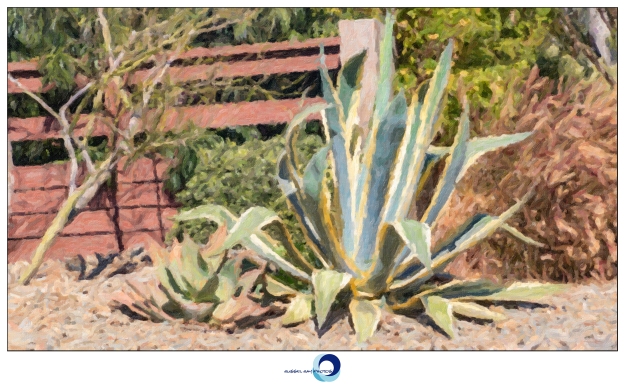
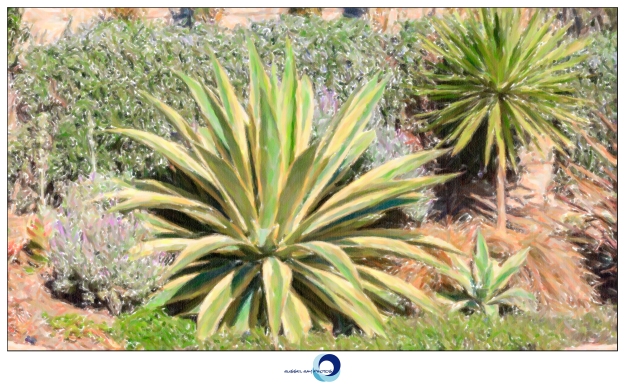











When I visited Barstow CA in late July, I visited the Mojave River Valley Museum. Barstow is a historic railroad town, as well as a stop on historic Route 66. The Museum had date nails for sale.
Date nails were first used in Europe in the late 1800s to document different kinds of wood and treatment used for railroad ties. The Santa Fe Railroad was the first to use them in the United States, in 1901. I spent 30 minutes looking through the Museum’s nails to find either one from my birth year of 1955 or the oldest one available. The last date nails were used in 1969, and those dated 52, 55, 57, and 59 are the rarest and most expensive. I wound up with a 1923 nail.
